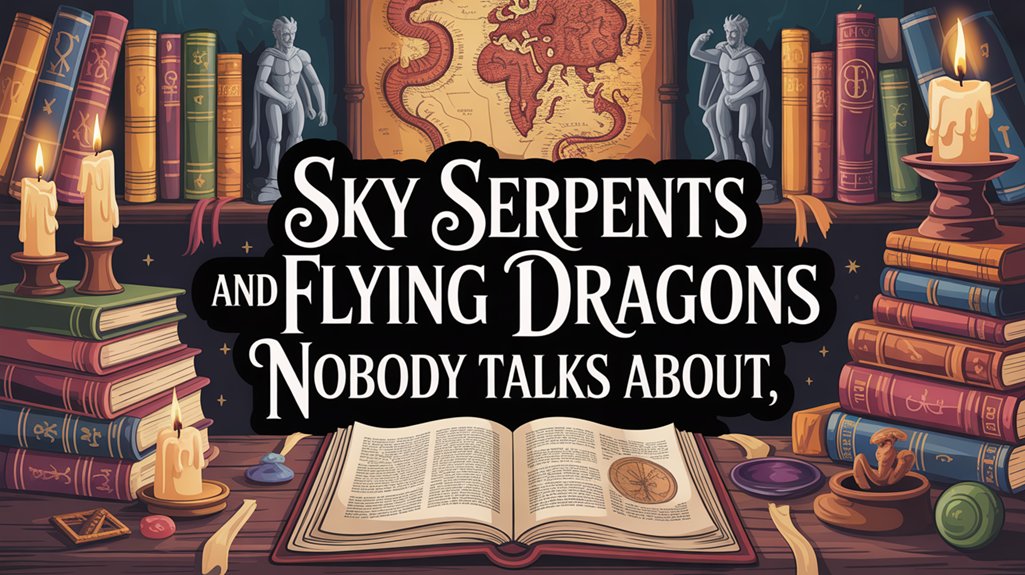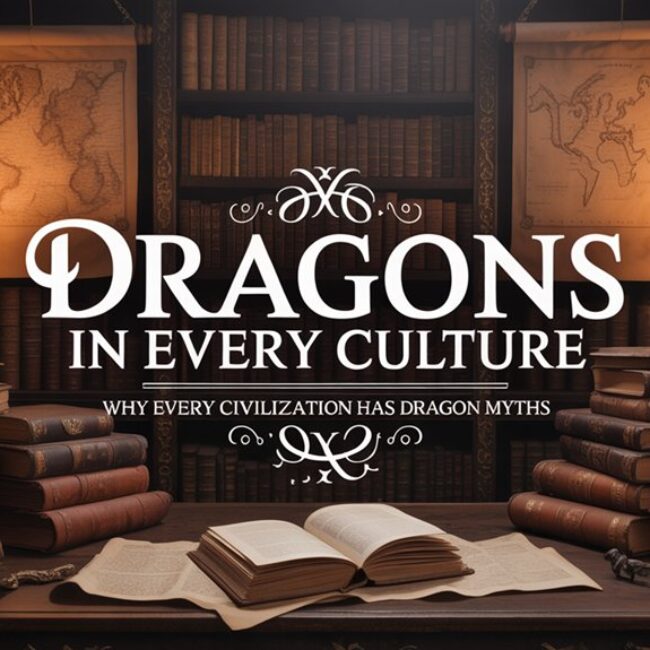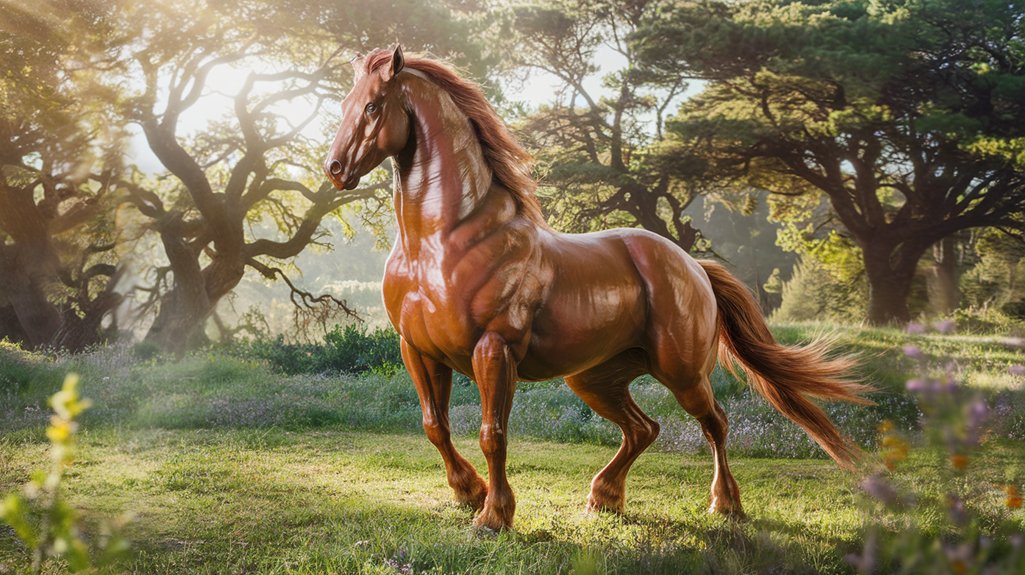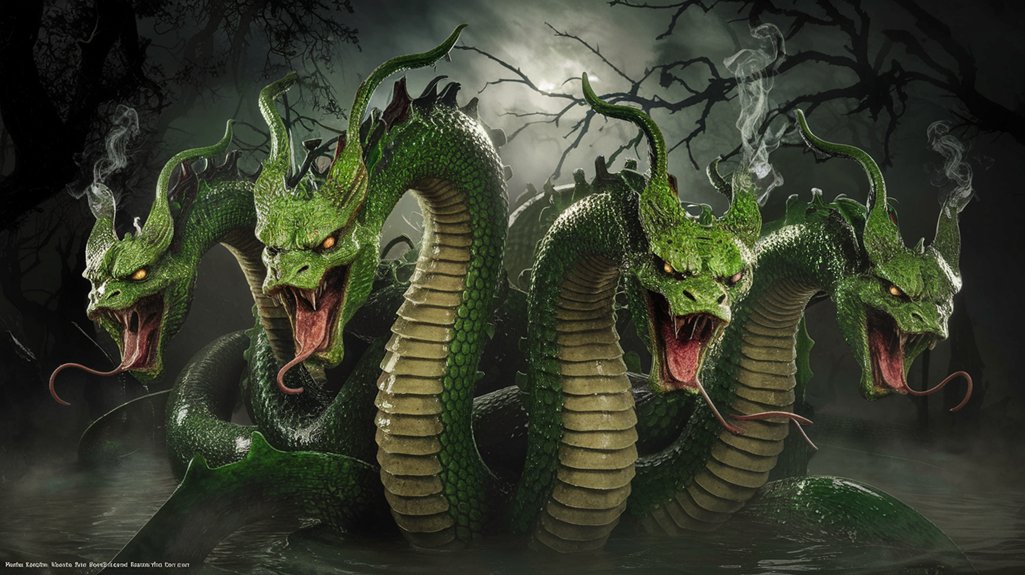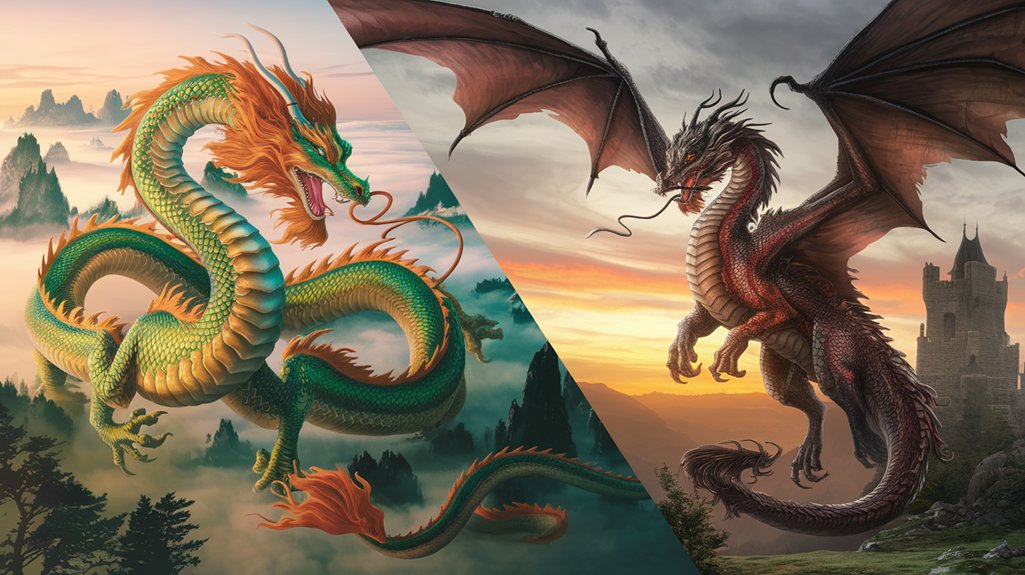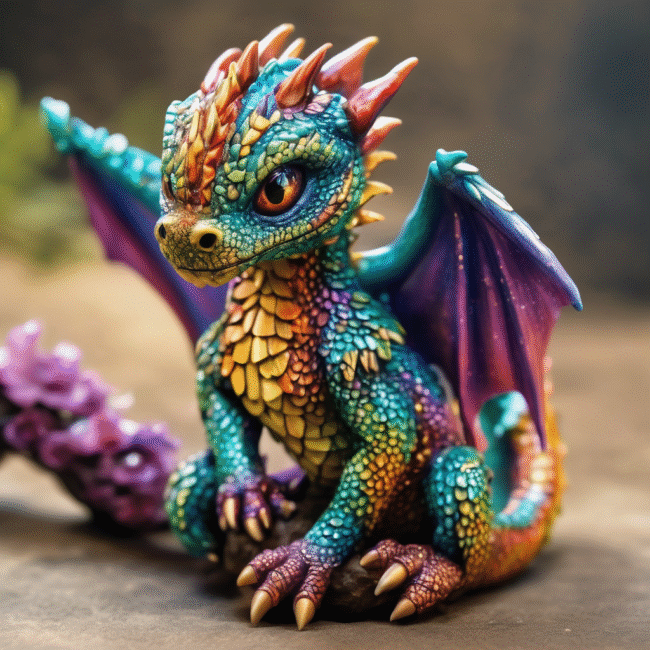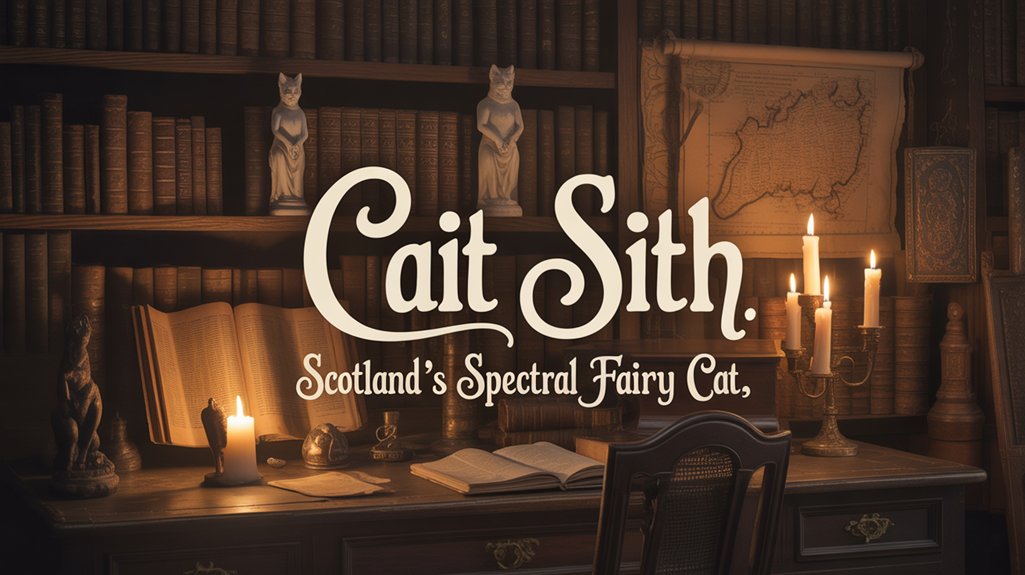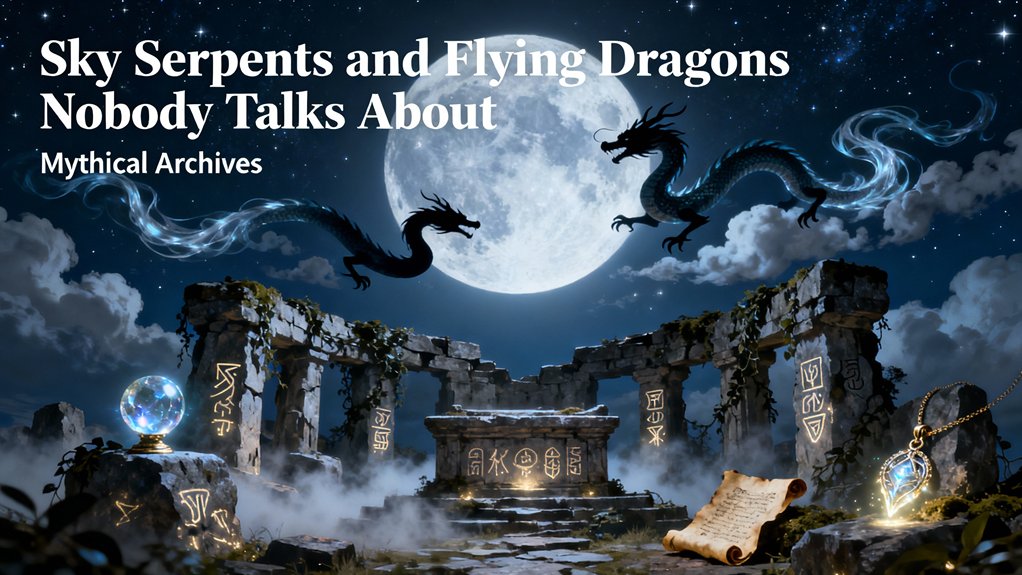
You'll discover the amphiptere lurking in medieval heraldry—limbless serpents with membranous wings defying zoological classification. From the Piasa Bird's limestone testimony near Alton, Illinois (documented 1673), to Quetzalcoatl's feathered presence at Teotihuacan circa 200 CE, these chimeric entities transcended mere symbolism. The Anglo-Saxon Chronicles recorded “fiery dragons” in 793 CE, while Australia's Rainbow Serpent carved celestial pathways through Dreamtime cosmology. Modern witnesses from Iliamna Lake to Papua New Guinea report identical aerial phenomena—twenty to forty-foot serpentine forms with undulating flight mechanics that ecclesiastical records and contemporary cryptozoology struggle to dismiss, revealing patterns within these atmospheric enigmas.
Table of Contents
ToggleKey Takeaways
- Aboriginal Rainbow Serpents like Yurlungur transcend earth-sky boundaries, carving the Milky Way and controlling weather across terrestrial, aquatic, and astral realms.
- Medieval European chronicles documented winged serpents with precise taxonomic detail, suggesting monks believed them tangible phenomena rather than mere symbolic omens.
- The Piasa Bird, documented in 1673 Illinois, served as both guardian and devourer in Indigenous cosmology, warning against malevolent spirits.
- Modern cryptid sightings from Alaska to Papua New Guinea describe 20-40 foot aerial serpents with flight mechanics defying known zoological classification.
- Quetzalcoatl embodied earth-sky duality in Mesoamerican culture, gifting humanity maize and sacred knowledge while representing transcendence through feathered serpent form.
The Amphiptere: Europe's Legless Winged Serpent of Heraldic Tradition
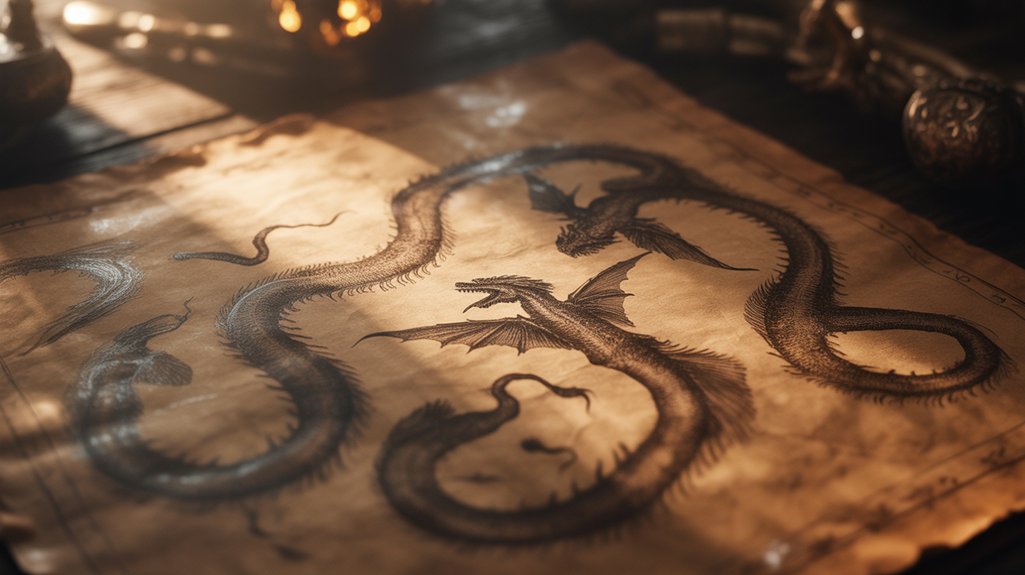
The feather-serpent of medieval Europe emerges from heraldic manuscripts not as myth's forgotten remnant but as pageantry's chosen symbol—a creature the heralds termed *amphiptere*, from the Greek roots meaning “both” and “wing.
Unlike its four-legged draconic cousins that terrorized saints and hoarded gold in chronicle accounts, this legless wyrm possessed only wings and sinuous coils, its form reduced to essential elements of flight and serpentine grace.
You'll find this chimeric being coiling through thirteenth-century armorial bearings, its presence declaring lineage and authority without the brutish terrestrial weight of conventional legless dragons.
The amphiptere's heraldic symbolism spoke to those who valued aerial dominion—mobility unshackled from earthbound limitation. Its feathered wings, occasionally rendered as bat-membranes in later interpretations, suggested creatures dwelling in liminal atmospheres between heaven's sovereignty and earth's domain.
Noble houses adopted this eldritch form precisely because it embodied paradox: serpentine wisdom heightened through wings that promised transcendence.
Piasa Bird: The Thunderbird-Dragon Hybrid of the Mississippi Valley
You'll find North America's most enigmatic chimeric entity etched into the limestone bluffs above Alton, Illinois—a creature Father Jacques Marquette documented during his 1673 expedition down the Mississippi, describing it as “large as a calf” with horns, red eyes, and a serpentine tail that merged Thunderbird iconography with draconic morphology.
The Illini peoples who created this eldritch petroglyph centuries before European contact understood the Piasa as both guardian and devourer, its scales rendered in mineral pigments that caught the morning sun across the water.
This confluence of avian and reptilian elements positioned the creature within a distinctly Indigenous cosmology, yet Marquette's account would forever bind it to Western dragon taxonomy.
Ancient Rock Art Origins
Along the limestone bluffs overlooking the Mississippi River near present-day Alton, Illinois, French explorer Jacques Marquette encountered something that chilled him to his marrow in 1673—a massive pictograph depicting what he described as a creature bearing “the face of a man, the horns of a deer, red eyes, a beard like a tiger's, a body covered with scales, and a tail so long it passed around the body, over the head, and between the legs.
This was the Piasa Bird, the eldritch sentinel painted high upon the cliffs by Illini artists centuries before European contact, its chimeric form blending the predatory majesty of raptors with serpentine sinuosity and mammalian features into a single overwhelming vision.
The ancient symbolism reveals:
- Territorial guardianship over sacred waterways
- Shamanic boundary markers between worlds
- Warning totems against malevolent spirits
- Cultural significance transcending mere decoration
Marquette's 1673 Expedition Account
When Marquette's birch-bark canoes rounded the limestone prominence on that sweltering June afternoon, the Jesuit priest found himself confronting an image so disturbing that he'd commit its every grotesque detail to his expedition journal with trembling precision.
The chimeric entity possessed scaly reptilian flesh, antlered crown, taloned appendages, and a serpentine tail that coiled across forty feet of weathered bluff face. Marquette's observations documented crimson pigments, eldritch features defying European taxonomy.
Indigenous interpretations revealed the Piasa—a creature inhabiting the threshold between earth and sky, devouring entire villages until warrior Ouatoga's sacrifice bound it to stone. The Illini painted this guardian here, where the Mississippi's dark waters carved through ancient limestone, preserving ancestral warnings in ochre and blood.
Rainbow Serpent's Celestial Forms in Aboriginal Australian Dreamtime
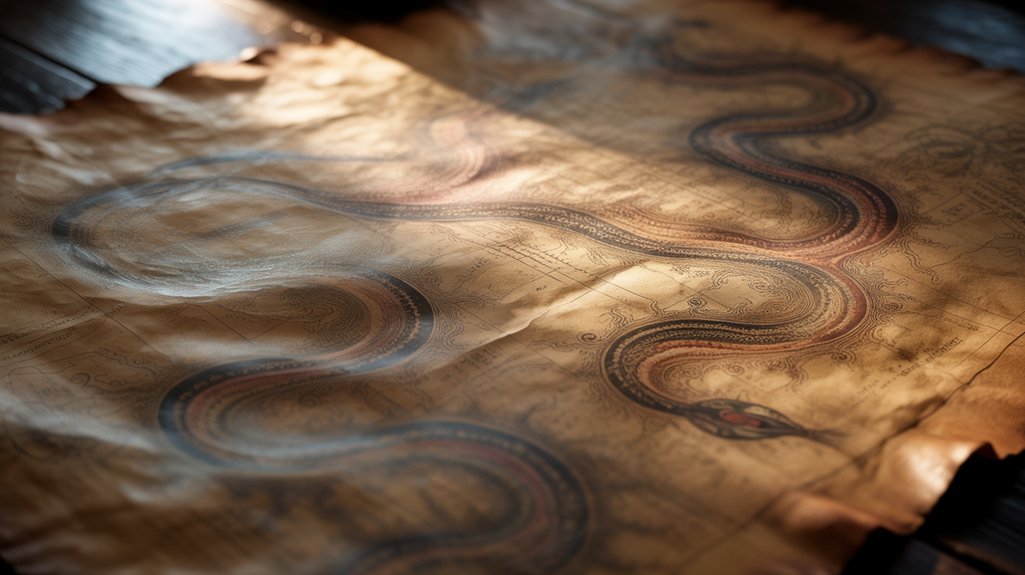
You encounter the Rainbow Serpent—known as Yurlungur, Ungud, or Waagyl across diverse Aboriginal nations—not merely as an earthbound water deity but as a celestial architect whose serpentine form bridges the star-strewn vault of the night sky with terrestrial waterways below.
This chimeric entity commands both meteorological phenomena and cosmic order, its iridescent coils manifesting as aurora-like bands that stretch across the heavens during rain, wielding dominion over lightning storms, seasonal floods, and the celestial movements that Aboriginal astronomers tracked for at least 65,000 years.
The Serpent's sky-dwelling aspect emerges most powerfully in Dreamtime narratives where it ascends from primordial waters to carve the Milky Way's luminous path, establishing the eldritch connection between ancestral law, atmospheric cycles, and the star patterns that guided ceremonial calendars across the continent.
Sky-Dwelling Serpent Manifestations
Though Western taxonomies insist upon rigid distinctions between earth and sky, the Rainbow Serpent of Aboriginal Australian cosmology refuses such colonial categorizations—this primordial being traverses all territories with sovereign fluidity, manifesting in the heavens as lightning bolt, aurora, and the polychromatic arc that bridges storm and sunlight.
You'll find this eldritch entity echoing in celestial dragons across cultures, each iteration preserving humanity's oldest recognition: serpentine forms dwelling beyond terrestrial confines.
- Lightning strikes reveal the Serpent's fangs, illuminating dreamtime pathways through ionized atmosphere
- Storm clouds become serpentine coils, their chimeric bodies writhing across monsoon seasons
- The aurora's undulating ribbons mirror cloud serpents witnessed by initiated knowledge-keepers
- Waterspouts connecting ocean to sky manifest the Serpent's unbroken continuum between territories
This sovereignty transcends boundaries imposed by empire.
Stars and Weather Control
Because the Rainbow Serpent's essence permeates every stratum of existence—terrestrial, aquatic, atmospheric, and astral—Aboriginal knowledge systems identify specific stellar configurations as the creature's celestial manifestations, granting initiated custodians the capacity to interpret meteorological prophecy through astronomical observation.
You'll discover that Yolngu elders track the Milky Way as the Serpent's luminous body arcing across night's vault, its movements presaging monsoon arrivals and drought cycles.
These celestial phenomena weren't mere symbolic gestures—they represented genuine navigational tools for survival. When certain constellations aligned, you'd witness the Serpent's chimeric power manifesting through atmospheric effects: lightning strikes, cloud formations, cyclonic winds.
The eldritch knowledge remains restricted, shared only through ceremonial initiation. Sky-reading wasn't superstition. It was science encoded in mythic language, liberating those who could decipher its patterns.
Cosmic Creation Story Elements
When Aboriginal cosmogenesis narratives describe the Rainbow Serpent's primordial activities, they're articulating a sophisticated understanding of celestial mechanics masked within mythic architecture—one where the creature's undulating form literally sculpted the cosmos from undifferentiated void.
You'll discover these cosmic myths emerged from Arnhem Land traditions spanning 60,000 years, positioning celestial beings as architects rather than mere symbols.
Consider these eldritch manifestations:
- Ngalyod's stellar body created the Milky Way through sinuous movement
- Julunggul formed constellations by shedding chimeric scales across darkness
- Wonambi's breath ignited primordial stars from nothing
- Galeru established planetary orbits through rhythmic coiling
These aren't metaphors you've misunderstood—they're sophisticated astronomical observations encoded within sacred narrative, where serpentine celestial beings literally shaped existence through conscious cosmological intention.
Quetzalcoatl and the Feathered Serpents of Mesoamerican Skies
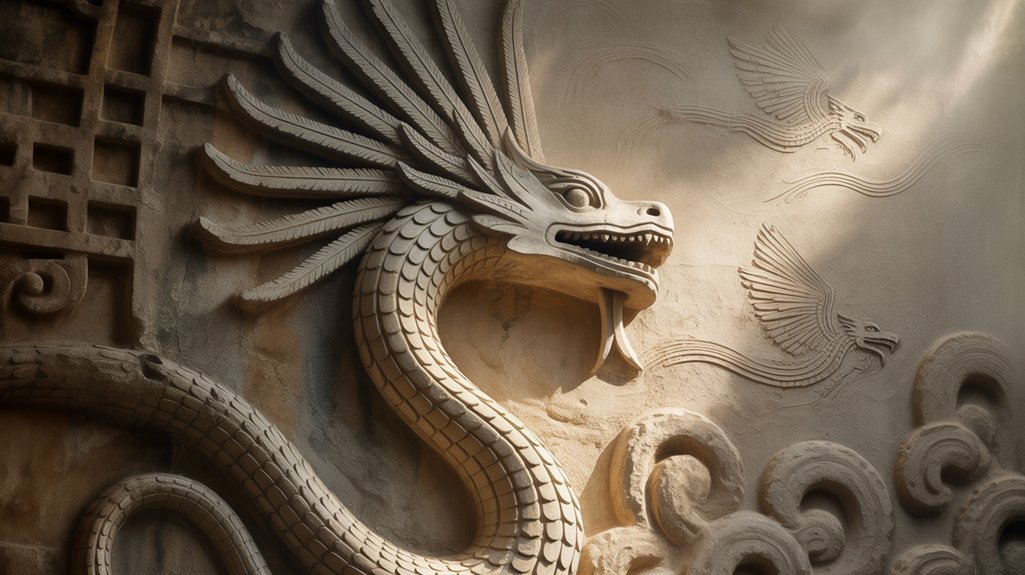
Among the towering stone pyramids of ancient Mesoamerica, where priests charted Venus's movements across obsidian skies, Quetzalcoatl emerged as the supreme celestial serpent—part bird, part snake, wholly divine.
You'll find this chimeric deity woven through Aztec, Toltec, and Maya cosmologies, his iridescent plumage representing transcendence itself. The feathered serpent mythology speaks to humanity's deepest yearning: alteration beyond earthly constraints.
Quetzalcoatl symbolism embodied duality—earth and sky, matter and spirit, constraint and liberation. His serpentine form grounded in terrestrial wisdom while resplendent quetzal feathers carried prayers skyward.
At Teotihuacan's Temple, stone carvings still display his undulating presence, each scale meticulously carved around 200 CE.
This wasn't mere superstition. Ancient Mesoamericans understood something profound: freedom requires bridging opposites, uniting what seems irreconcilable.
The eldritch serpent descended bearing maize, calendar systems, sacred knowledge—gifts enabling self-determination.
His legend persists. Unbound by conquest, untamed by time.
Medieval Accounts of Winged Serpents in Historical Chronicles and Church Records
Half a world away from Mesoamerica's sun-drenched temples, European monks hunched over vellum manuscripts, documenting their own encounters with winged serpents—creatures they recorded not as gods but as omens, adversaries, manifestations of earthly evil requiring saints and soldiers to conquer them.
Where Mesoamerica saw divine feathered gods, European scribes chronicled winged serpents as harbingers of doom demanding saintly intervention.
You'll find these eldritch beings threaded throughout medieval manuscripts, their chimeric forms illuminated in gold leaf and blood-red vermillion. Church interpretations altered them into moral battlegrounds.
Notable chronicles preserve these testimonies:
- *Anglo-Saxon Chronicles* (793 CE) describe “fiery dragons flying through the air” before Viking raids devastated Lindisfarne.
- Irish annals document serpents with “terrible wings” emerging from lakes during eclipses.
- Germanic Gesta Danorum records warriors confronting aerial serpents guarding ancient barrows.
- French ecclesiastical records detail processions held to ward off winged creatures plaguing villages.
These weren't metaphors. Scribes employed precise taxonomic language, distinguishing wing structure, coloration, behavior patterns—documentation suggesting observers believed they confronted tangible phenomena, not symbolic constructs.
Modern Cryptid Sightings That Echo Ancient Sky Serpent Descriptions
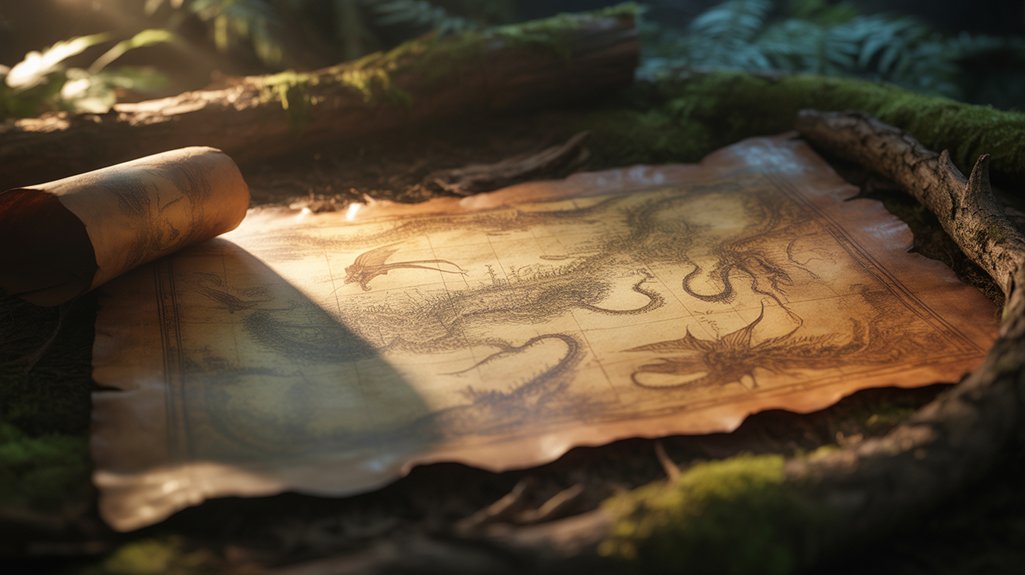
Though centuries separate medieval scribes from modern witnesses, the descriptions remain eerily consistent—elongated bodies undulating through clouds, membranous wings catching sunlight, scales reflecting metallic hues that no terrestrial reptile possesses.
Contemporary cryptid encounters from Alaska's interior to Papua New Guinea's highlands document chimeric forms that medieval bestiaries would recognize instantly. You'll find witnesses describing creatures twenty to forty feet long, serpentine yet aerial, defying conventional zoological classification.
The serpent symbolism embedded in these sightings transcends mere coincidence. Papua New Guinea's Ropen reports from the 1940s onward mirror dragon accounts from Bede's eighth-century chronicles—bioluminescent qualities, nocturnal hunting patterns, preference for coastal territories.
Alaska's 2002 Iliamna Lake observations recorded creatures exhibiting flight mechanics impossible for known fauna. These aren't isolated aberrations. The eldritch consistency suggests either collective archetype or persistent reality.
You're witnessing the same phenomena our ancestors documented, ただし without their interpretive frameworks, leaving modern observers grasping for explanations that ancient cultures already possessed.
Frequently Asked Questions
What Evolutionary Purpose Would Wings Serve for Serpent-Bodied Creatures?
You'll find winged adaptation grants serpent-bodied creatures extraordinary evolutionary advantage through improved predation and territorial dominance.
These chimeric forms transcend earthbound limitations, accessing previously unreachable prey in canopies and cliff faces. The liminal fusion—serpentine flexibility paired with aerial mastery—creates apex hunters capable of striking from impossible angles.
Ancient texts from Mesopotamian ziggurats to Mesoamerican codices document this eldritch morphology, revealing how flight alters reptilian hunters into sky-dwelling sovereigns, answerable to nothing terrestrial.
Why Do Sky Serpent Myths Appear Independently Across Unconnected Ancient Cultures?
You'll find the same thread winding through separate civilizations because humanity shares archetypal symbolism—serpents rising skyward represent primal metamorphosis.
Cultural diffusion explains some overlap, but not serpent deities appearing in pre-Columbian Americas, Mesopotamian apocrypha, and Shang Dynasty oracle bones simultaneously.
The eldritch pattern suggests something deeper: universal human consciousness recognizing chimeric sky-serpents as symbols of unfettered power, liberation from earthbound existence.
These weren't mere coincidences. They were collective visions of transcendence.
Could Atmospheric Phenomena Explain Historical Serpent Sightings Instead of Actual Creatures?
You'll find atmospheric optics offers compelling explanations for historical sightings—light pillars, sun dogs, and auroral phenomena manifest as serpentine forms across darkened skies.
Yet this rational framework can't fully account for the extraordinary consistency of witness testimonies spanning millennia, from Mesopotamian tablets to Ming dynasty records.
The eldritch precision of scales, eyes, undulating motion.
Perhaps these chimeric visions emerge from liminal spaces where natural phenomena and collective consciousness intersect, defying simple categorization.
What Psychological Factors Make People Interpret Unknown Flying Objects as Serpents?
You'll perceive serpentine forms in clouds and sky-bound enigmas because your cognitive biases—particularly pareidolia and confirmation bias—compel pattern recognition in chaos.
When confronted with eldritch aerial phenomena, you instinctively reach for cultural symbolism embedded deep within collective memory: dragons, nagas, feathered serpents.
These aren't mere superstitions but ancestral frameworks your mind employs to convert the incomprehensible into mythic language.
Your psyche craves meaning over uncertainty, altering ambiguous stimuli into chimeric creatures your culture's taught you to recognize.
Are There Any Preserved Physical Remains Claimed to Be From Sky Serpents?
You'll find no authenticated fossil discoveries linking skeletal remains to aerial serpents, though cryptozoological evidence surfaces periodically in remote monasteries, private collections.
Tibetan gompa shrines allegedly preserve scaled fragments; Chilean museums house elongated vertebrae defying classification.
These relics dwell in liminal taxonomic spaces—neither wholly avian nor reptilian, their chimeric nature resisting conventional analysis.
Most specimens vanish before scientific scrutiny, leaving only photographs, whispered accounts.
The eldritch truth remains frustratingly intangible, perpetually dancing beyond empirical verification's reach.
Conclusion
You've traced these eldritch forms across continents, through manuscript margins and Dreamtime visions, recognizing patterns that culture can't erase. The amphiptere's coils, the piasa's wings, Quetzalcoatl's feathered ascent—they're mirrors reflecting humanity's shared sky-gazing inheritance. These chimeric sentinels persist in consciousness, threading through your modern world despite dismissal. You've glimpsed the liminal truth: that serpents once ruled heavens everywhere, and their symbolic power still writhes, undeniable, through collective memory's ancient corridors.

